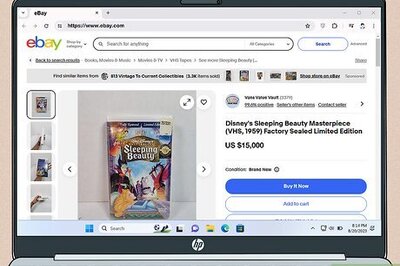
views
T Vijay Kumar was standing at a lectern and talking about slaying the dragon of poverty. An Andhra Pradesh Cadre IAS officer, he had fought some stiff battles with the mother of all miseries and so people were keen to listen to him. This was at a conference on human development in Delhi last year. And then he made a statement that caught the policy wonks and social activists by surprise. "No government scheme will have a sustainable impact [on the poor in India] until the poor are organised," he said. Huh?
Yes, Vijay Kumar's remark doesn't quite add up unless you appreciate two things: One, while the human knows how to split the atom, it doesn't know how to make people 'un-poor'; two, India has been trying to do exactly this for about 60 years, with poor results.
Indira Gandhi provided India with the slogan of Garibi Hatao (Remove Poverty) in the early 1970s. Since then, most big-ticket government schemes on poverty alleviation have either directly given productive assets to the poor, or provided them subsidies. The hope was that the poor would use them to come out of poverty — by themselves. They did not. Nirmala Devi certainly didn't.
This 45-year-old woman is an ‘untouchable' or ‘mahadalit' belonging to the Ravidas community in Shekhwara village of Gaya district in Bihar. She has three children and both she and her husband are illiterate. Her family income was the 3 kg of poor quality rice that her husband would get as a daily wage for his intermittent work on a farm. To meet the family's various needs, he would have to barter this rice. Sometimes he would work on some nearby construction site and earn Rs 80 for a day's work.
All their efforts at saving money and pulling their family out of penury were mostly undone by some illness in the family. Every illness would force them to borrow from the village moneylender who would charge interest, sometimes upwards of 100 percent. They could not pay back and ended up being under the moneylender's thumb, providing free labour on his farms. The government had allotted Rs 2 lakh worth of land but Nirmala had to use it as collateral.
According to Vijay Kumar, you cannot attempt to solve the problem of poverty if you straightaway try and solve it for each individual. That step can be taken only after you have organised the poor into small batches and then target the money at these groups. Vijay Kumar should know. He was the man in charge of implementing such a programme in Andhra Pradesh. Later, the Bihar government used this approach and Kumar's knowledge to try something similar, called Jeevika, in the state. While in Andhra Pradesh this approach has spread to all districts, in Bihar it covers only nine of the 39 districts at present.
Going National
Now the Central government has asked Kumar to take this approach to solving the poverty puzzle to all states. The new programme is called the National Rural Livelihood Mission (NRLM). At the national level, NRLM would represent a whole new approach to fighting rural poverty in India. The encouraging fact is that the model has had good success in the two states out of the four where it has been tried.
No one is in a better position to vouch for Kumar's thesis than Nirmala Devi. Last year, she used the funds from the Jeevika programme to repay her debt and reclaim her land. She then used the funds to start a shop, which eliminated her dependence on agricultural income.

















Comments
0 comment